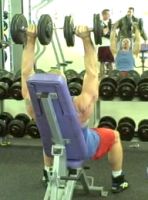Buy "The Now What? eBooks" Here! Or go to Smashwords for misc. formats.
The Now What Fitness Series lays out the foundation of fitness in a concise and simplified manner, making for a collection of books that help the reader truly comprehend how to improve one's health and well-being from A to Z. I've broken fitness down into comprehensive concepts, giving anybody who truly wants to change their health and their lives in profound ways, the step-by-step tools and knowledge to do so.
The Definition of Fitness
If you don't even understand the definition of fitness, how do you expect to achieve it? By clarifying its meaning we can more easily break fitness down into attainable goals.
Physical fitness may be defined in many ways. The FIVE COMPONENTS OF FITNESS and the short version of their meaning are as follows:

Cardiovascular/Cardiorespiratory Endurance - The capacity of the heart-lung system to deliver an adequate oxygen supply for sustained energy production. Also known as aerobic fitness. Example: Walking or running on a treadmill as shown below.

Muscular Strength - The amount of force that a muscle can produce in a single, maximal effort. Example: Performing one dumbbell shoulder press using the heaviest weight you can possibly lift.
Muscular Endurance - The amount of force that a muscle can produce repeatedly against resistance, i.e., performing a set of 12 repetitions of a dumbbell shoulder press; or to hold a fixed or static contraction, which is also known as an isometric contraction, i.e., holding the dumbbells over the head as demonstrated in the above picture over a period of time.

Flexibility - The range of motion possible about a joint, as I am demonstrating with the triceps stretch below.

Body Composition - The ratio of body fat to fat-free (lean) mass in an individual. In other words, the amount of fat compared to bones, muscle, organs, etc.
Diving Deeper into the Definition of Fitness

FUNDAMENTAL PRINCIPLES OF EXERCISE
In order to achieve optimum health and fitness in these five areas you must incorporate consistent exercise into your lifestyle. There are a few fundamental principles of exercise that must be adhered to in order to progress safely and effectively with any exercise plan. Furthermore, it would be impossible to truly understand the meaning of fitness or how to achieve it without the inclusion of these essential principles.
- One should incorporate a structured exercise plan that aims at a good balance of training each of the fitness components.
- It is necessary to use progressive intensity as you train to bring about improvement.
- It is also imperative to take appropriate time off or rest between sessions to allow recuperation and growth to take place.
- Any type of fitness training, whether it is aerobic, strength, or flexibility training, is based on what exercise physiologists call the overload principle. To train any of the body’s systems, such as the cardiopulmonary or musculoskeletal system, we must make it work harder than it is accustomed to working.
- A major fundamental principle in training for optimal fitness is specificity of training. In other words, each component of fitness is conditioned or trained in very specific and differing ways.
Return from The Definition Of Fitness to Straightforward Fitness Home
Return from The Definition of Fitness to Optimal Fitness
